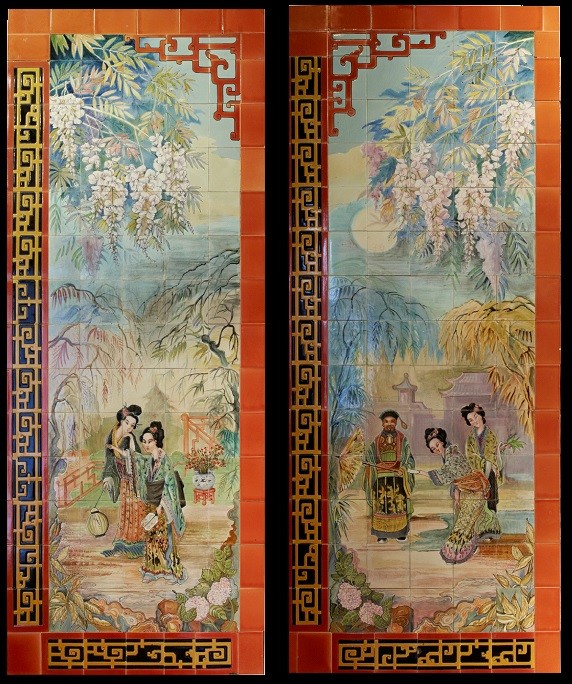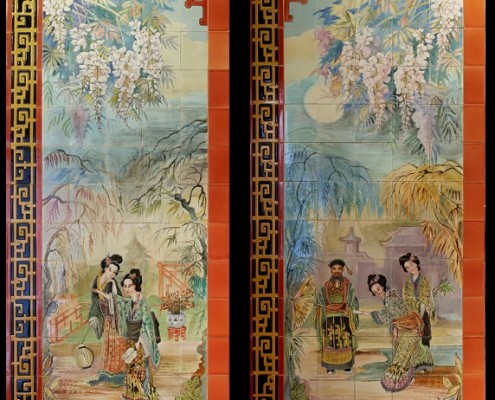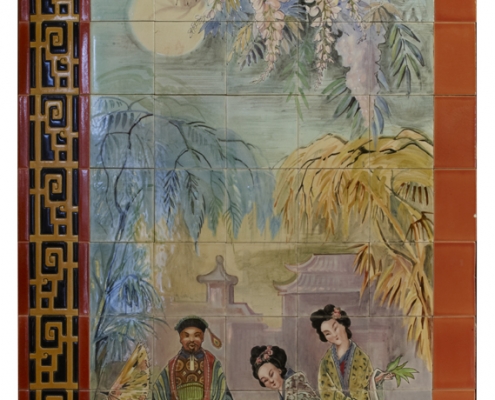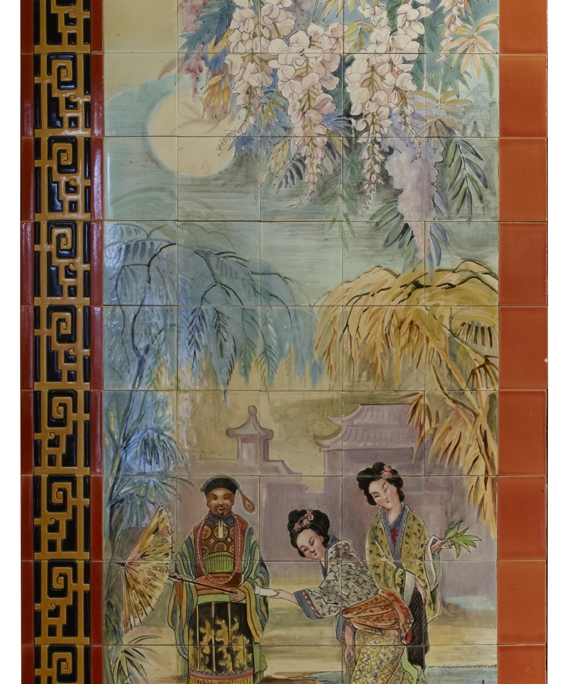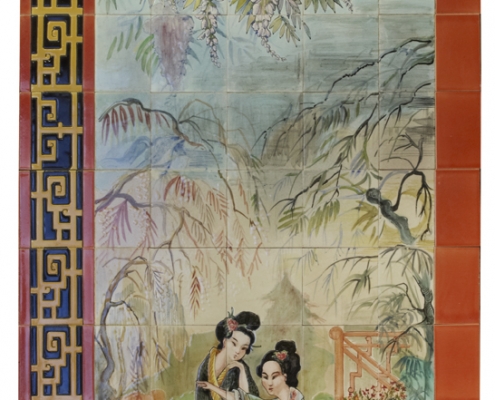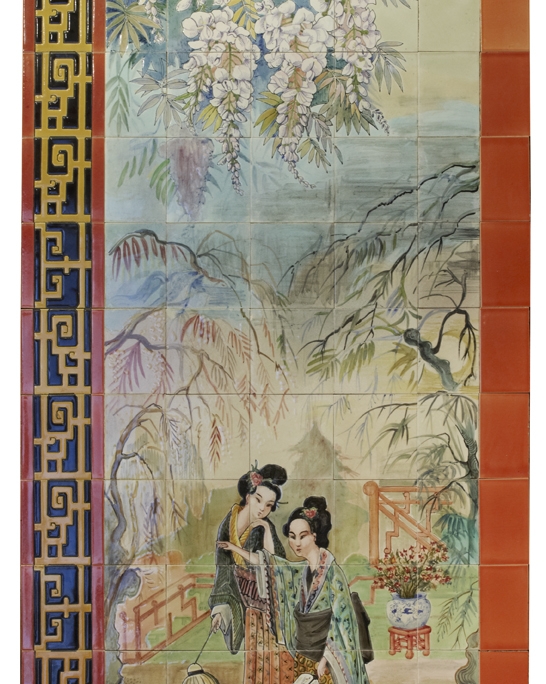Pair of decorative panels – Maison HELMAN, Belgium, beginning of the 20th century
This pair of ceramic panels is a fine example of the influence of Far Eastern prints on European decorative arts in the late 19th and early 20th centuries. Following the reopening of Japan and its first agreement with France in October 1858, a large number of Tokugawa works of art were brought to France. Visible at the London International Exhibition in 1862 and the Paris Universal Exhibition in 1867, they also appeared on the art market and adorned important private collections.
By their iconography, their size and the richness of their enamels, our panels were to offer an ideal decoration to one of these interiors of amateurs fascinated by this elsewhere.
This new influence of the Far Eastern arts coincides precisely with the extraordinary development of artistic earthenware factories in the North of France and in Belgium.
Célestin Helman can already boast many years of experience in the sector when he founded his own company in 1902 under the name Maison Helman Céramique, based in Brussels, Belgium.
Around 1910, Helman specialized in “decorative panels and coverings in artistic ceramics”. These often large tile panels were made “by hand by ceramic artists”, in both Art Nouveau and historising styles. There was a free choice of shape and colour, and there was also a choice between stoneware for exterior applications and earthenware for interiors. Little is known about the designers of all these tile panels. It is certain that Celestin Helman designed projects himself and also had access to drawings made for the Hasselt Decorative Ceramics Factory, including some by the Brussels painter Jacques Madiol.
Our two panels come from a larger set made to decorate a Belgian house in Ronse (Renaix).

